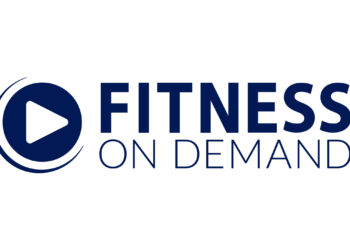Since the time of our earliest ancestors, there was never a need to debate or discuss the benefits of concentric only resistance training, because it was never really a thing. Back then anything we would lift, like a rock for example, would have the same weight when we pick it up as when we put it down. Naturally, gravity is acting on that rock in both directions. The resistance on the up (or pull direction), is referred to as concentric resistance which is when the muscle is contracting. The return motion down, called eccentric resistance, is stretching the muscle on the return.
Today, a new breed of connected strength training products has entered the market that actually allows fitness enthusiasts of all levels to disengage from the universal law of gravity, and isolates and varies the different phases of strength training. Tonal is the most well-known of these innovative new products, but other market introductions are also making an impact. These machines allow for the first time on a mass consumer scale, the ability to workout with concentric only resistance, or in some cases, vary the resistance of the two phases so they are considerably different. So for example, someone using these machines has the ability to work out with a range from concentric only resistance to eccentric resistance that is 150% more than the concentric movement.
The benefits and effects of this non-gravity-based form of resistance training on the muscles, tendons, and joints and ultimately how they affect strength and performance — particularly in sports — are fascinating. These new findings have increased the need for more studies as to the benefits of this variable resistance profile-based training. In particular, athletic trainers, kinesiologists, weightlifters, and many more are studying whether concentric only or concentric-biased training is as effective as the time-proven gravity-based weight training for building and strengthening muscle. Ultimately, and it may sound controversial to say, traditional weight training is an exercise that is primarily concentric in nature. There have been several studies over the past number of years that have provided some fascinating results, which can be set into three buckets.
1. Muscle Building Effectiveness
Does concentric build and strengthen muscle as well as conventional strength training and weights? The answer is summarized nicely on the website The Muscle PhD with plenty of supporting information. “When studies examine the same load between eccentric and concentric contractions, there’s no difference in muscle growth.” The reason is that the eccentric motor units of a muscle fiber only fire when there is weight in excess of what the concentric motor units can handle.
So if there is no additional weight added during the eccentric phase (eccentric overload), as is the case with doing a dumbbell curl or doing a chest press with a barbell, then it is essentially a concentric-biased lift. However, to compensate for the lack of time under tension during the eccentric phase, one would vary the tempo and resistance, to allow for more strain and time in the concentric phase, so as to quickly re-engage the muscle after a relatively quick eccentric movement. This is possible because there is no inertial mass built up on the eccentric phase that would lead to the weight crashing towards the body. Making a concentric lift safer in nature even when allowing the user to max out their reps at higher intensity.
2. Less Muscle Damage, Quicker Recovery and Higher Training Frequency
So if the muscle-building properties are relatively equal, then could there also be some advantage to concentric biased training over weights? The answer is yes when it comes to excess muscle damage and wear on joints and ligaments. Again from The Muscle PhD website, “when the eccentric phase is loaded up too much, this can lead to muscle damage and can actually decrease muscle fiber size and impair training frequency – neither of which are desirable by bodybuilders.” Sports science has shown that concentric-only training also produces less delayed onset muscle soreness. This means less fatigue, but more importantly, it means you’ll be able to recover quicker and train more often. Concentric training has also been shown to cause less ligament and joint damage making it a safer option for rehabilitation and physical therapy.
3. Better for Power and Explosive Plyometric Training
There is another added benefit to concentric-only training particularly if you’re focused on improving your explosive power. Concentric-only exercises are more representative of athletic and sports movements focusing on quickness, speed and power. Thus working on concentric training enhances and improves an athlete’s performance in these areas. For example, jumping and throwing a football requires movement and forces in one direction, it only matters the power generated to execute the throw. Therefore concentric training more accurately represents many of these movements executed during sporting activities.
Now that we understand some of the benefits of concentric-only training, we should put it all into perspective. There shouldn’t be an actual argument as to whether concentric only training is better or worse than regular weight training which encompasses both concentric and eccentric modalities. The intention of this article is to dispel the common thinking that concentric-only training is not effective, or is just “half of a workout”. Unless you often incorporate eccentric overload training into your strength training workouts, you often do not actually engage the eccentric motor units, thus rendering your weight training workouts with actual weights to be primarily concentric in nature. However, there is an advantage to concentric training with regards to less muscle and joint damage, and more specifically for sports-specific training for power and explosive movements.
Stay ahead in the fitness industry with exclusive updates!
If you would like to learn more about MAXPRO, and how our 10lb portable and connected cable machine can provide up to 300lbs of concentric resistance with the above benefits to use practically anywhere, please visit our website at maxprofitness.com









